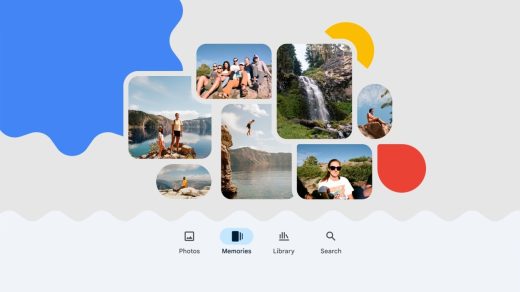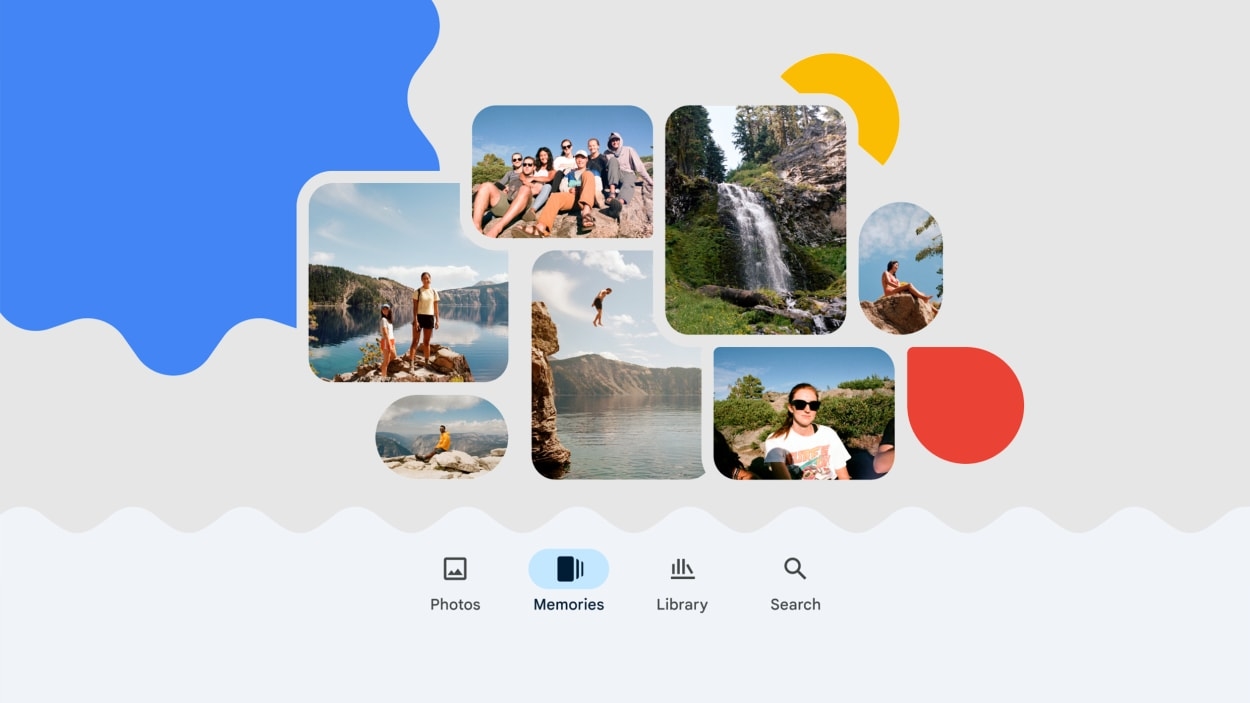Google Photos just got much better—here’s how (exclusive)
More than a billion people around the world use Google Photos, and half of them use its most popular feature called Memories each month. Memories automatically generates those surprising, sometimes random, sometimes tear-jerking video slideshows from your vacations, meals out, and everyday life. And in a new update rolling out today, the Google Photos team is now doubling down on Memories—refining the design to feel more like a friendly scrapbook, introducing the option to edit slideshows with friends, and, of course, expanding into some generative AI features as well.
The update is part of an ongoing evolution of the Google Photos platform, according to the design team. Google Photos first launched in 2015 in an era when people had their photos spread across many devices (laptops, digital cameras, and phones) as a way to unify someone’s personal media. By 2019, Google Photos had grown into a billion-user juggernaut, thanks to how simple it was to integrate into an existing Google account. But with new capabilities came new issues.
“We started to observe new problems from people having larger libraries and more sophisticated expectations from their phones,” says Yael Marzan, director of product management at Google Photos. “We noticed people had their photos and videos stored but rarely went back to look at them—even though they said they aspired to.”
The solution was Memories, which used AI to analyze users’ photo library to create custom video montages, surprising the user with videos to watch that were similar to Snap’s popular Stories format, which was all the rage pre-TikTok. (Memories was already a feature in Apple Photos, where it first launched in 2016.) To this day, Google Photos sends notifications when it’s created new memories, and 499,999,999 people like myself have been pulled back into their old photos as a result. I’ve relived some of my family’s favorite moments after tapping on a simple push notification. My main criticism is that the feature has maybe worked too well, sucking me into my phone through a powerful sense of nostalgia.
Now, through the new redesign, Memories is less a steady stream of surprises than an ongoing visual timeline of your life. While Google will still automatically stitch together videos from your photos, these mini albums will live in a newly designed tab in the app (called Memories). Tap into any of them, and you’ll see your video along with a collection of all the related photos beneath it.
“We’re essentially expanding, saying this daily surprise works well and is delightful, but there’s an appetite for users to go back to some of those moments—the more meaningful ones,” says Marzan. “It’s almost like a shift from a stream of media to how you actually think about your life. You don’t think about your life as an all-equal grid of media. You think of moments.”
Each memory now appears as a collage of thumbnails (instead of just one), which include titles generated by AI, along with scrapbook-like details including oval-cut images and thumbnails with more generously rounded corners than previously seen in the app.
“As we were prototyping, we noticed when something is being created for you—like a memory—it’s better to have more context . . . in this case, [that’s] more photo previews,” says Carolina Amiguet, UX designer and research lead on Google Photos.
Sometimes, these events also include a larger poster image, which has a squiggly edge on top, as if it’s been cut out with crafting scissors. This scrapbooking aesthetic is an intentional bit of skeuomorphism by Google, that’s “less utilitarian . . . even emotional,” according to Amiguet.
These memories are also editable, or even something you can produce from scratch to virtually scrapbook your life. Now, when viewing a memory, you can invite a friend to edit it with you. And Google Photos will suggest images your friend might want to add to it (say, you took a weekend trip together, the software will likely scan the geotags of your images and realize that, suggesting images to fit).
Much of this capability is due to the existing magic of Google Photos AI, and the new Memories feature adds more. Now, you can use generative AI to task Google with writing a headline for each of your memories, in case you’d prefer not to name them yourself. Just tap a “help me title” button, and Google will generate three possible headlines. If you don’t like any of them, there’s an “add hint” button which will let you add more details to nudge the AI more into your way of thinking.
So far, it’s hard to tell how useful this feature is. On April 9, Google Photos generated a memory of my family dinner of ham and asparagus. The headlines it suggested included “A night in with the squad” (accompanied by a hot dog emoji?), “adorable family gathering,” and “home sweet home.” But April 9 was Easter! A simple calendar reference would have revealed that. To suggest that I was celebrating Easter dinner, even as an atheist, seems like it would have been a fair guess. Notably, the AI spotted our Easter egg coloring from the day before, and labeled the event around the holiday.
But even when it works, this sort of labeling task is table stakes for generative AI. I ask Marzan if Google Photos plans to take the idea further—to actually let me craft my memories through natural language requests like, “create a memory of all my son’s Halloween costumes over the years.”
“Absolutely,” she responds. “We want to be very thoughtful here for solving real user problems . . . but there’s definitely an appetite for leveraging that technology to help users in more ways.”
It’s an update I hope to see on Google Photos (and Apple Photos) soon. Our vast photo libraries are more than scrapbooks; they are the visual records of our lives. And the company we trust with that archive over the next several decades will need to do more than offer inexpensive storage and an occasional pop of nostalgia. It will need to make sense of our life’s story, to sift actionable knowledge from our images, and to even inform us of the things that could make us profoundly uncomfortable. These Google Photos updates are a step in the right direction. But Google will need to bring its full suite of intelligence to the service if it hopes to rule the future.
(18)



